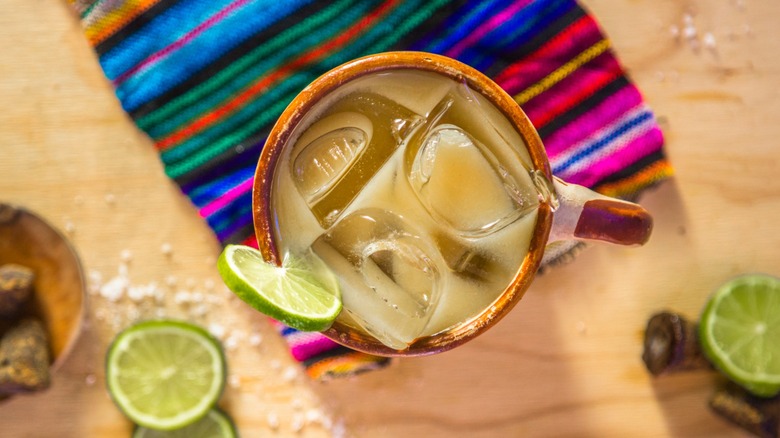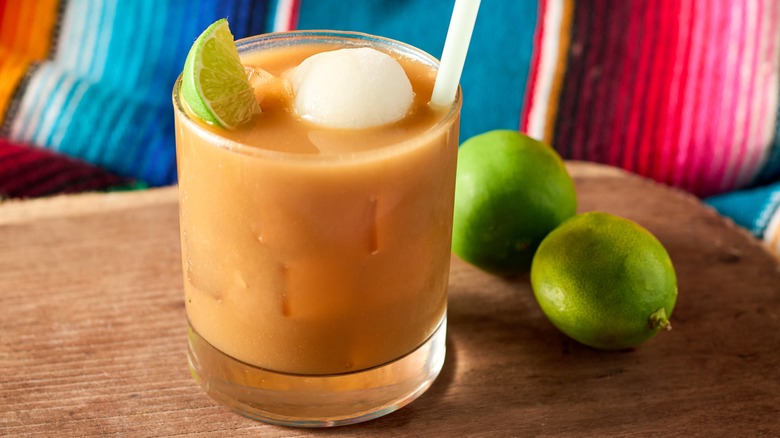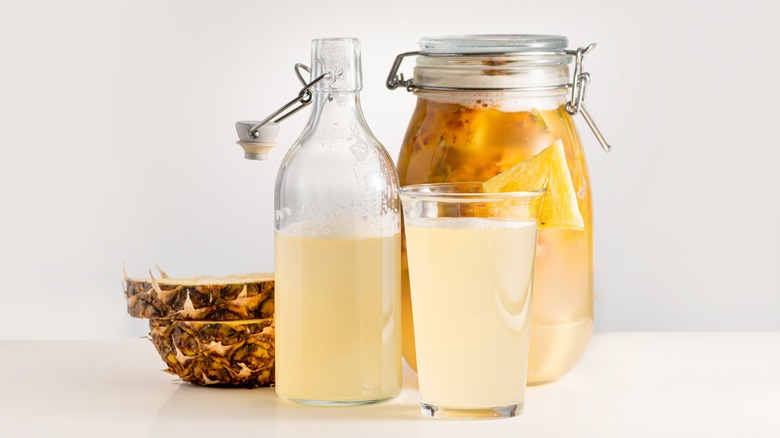Tejuino Vs Tepache: How Do These Traditional Mexican Drinks Differ?
What is it about the human condition that begs — nay, demands — access to locally sourced alcohol? Our relationship as a species to the fermentation process dates back at least 7,000 years and shows no signs of slowing down anytime soon. In Mexico, two of the most popular and enduring traditional beverages are called tejuino and tepache. But what are they, and how are they different?
Both of these Mexican staples are part of a long history of low-alcohol-content pre-Columbian drinks, alongside pulque, a tequila predecessor that was hugely important in Aztec mythology, and colonche, a drink made from the tunas of nopal cacti (because yes, you can eat cactus). Most of these beverages were originally religious or ritualistic in origin, reflecting a connection to the gods of the land by sanctifying the flora that grew in abundance in the region. While tejuino and tepache started out similarly, their evolution over centuries of recipe adjustments and new ingredient introductions has led them to different endpoints.
What is tejuino?
Tejuino hails from the central-western areas of Mexico, now known as Jalisco, Colima, and Michoacán. It was originally cultivated by either the Nahua or Wixárika people, depending on whom you ask, though the name comes from the Nahuatl language and means "heartbeat." The drink is made by taking the same kind of corn masa used to make tortillas and boiling it in water with piloncillo (also known as Mexican brown sugar). It then sits and ferments for 24 to 48 hours, during which it takes on a unique flavor that's both sweet and sour. In some ways, tejuino can be seen as a North American relative of South America's fermented corn drink, chicha.
Tejuino is often referred to as "the drink of the gods" due to the connection between maize and the divine. For the Wixárika, the drink represented the link between the living and the dead and was seen as a way to communicate with ancestors. Today, it's often served in public markets or squares and is presented in a variety of ways. Those who prefer their tejuino spicy add Tajín, while lemon sherbet (not sorbet) is a popular way to turn the thick drink into a refreshing dessert.
What is tepache?
If you've been to a trendy bar recently, you might have noticed a previously unfamiliar word on the drink list and wondered, what is tepache? Tepache is another low-ABV fermented creation of the Nahua people, but unlike tejuino, it is typically made with pineapple — though originally, it too was made from fermented corn, as evidenced by the name, which in Nahuatl means "drink of corn." It's believed that sometime after 700 B.C., the change was made from corn to pineapple, as the fruit made its way up from native South America.
Over the centuries, spices like cinnamon and cloves were introduced to add flavor. The fermentation process of tepache also gives rise to natural probiotic properties. The drink can be made by adding pineapple core and rinds, along with cinnamon, to water with dissolved piloncillo, then allowing the mixture to sit for up to four days before straining out the solids.



